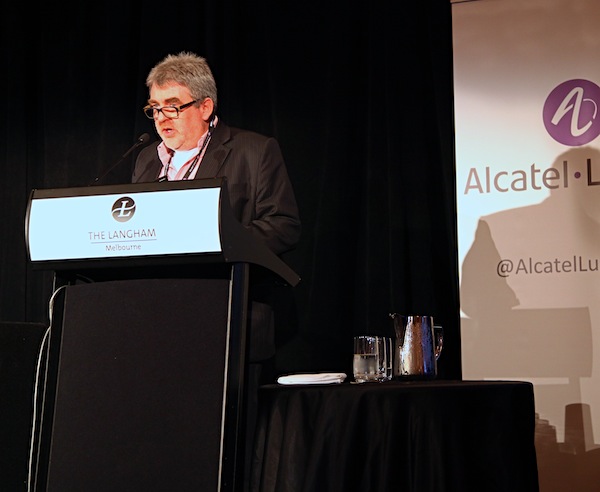NBN users uninterested in 12Mbps, PSTN voice: iiNet

Fully 70% of the customers iiNet connects to the national broadband network (NBN) are opting for plans running faster than the 12Mbps minimum and only half are taking a conventional phone service, the company's chief technology officer John Lindsay has revealed.
Speaking at the recent CommsDay Melbourne Congress, Lindsay said the nation's third-largest ISP had over 20,000 NBN customers currently taking services over the network.

The NBN had proved to be a significant tool for acquisition of new customers, with more than 60% of its NBN signups by customers who were new to iiNet – many of them in NBN-connected greenfields estates that had recently been brought online – and the remainder switching from services delivered over what Lindsay described as Telstra's "dilapidated" copper access network.
The proclivities of iiNet customers for faster speeds contradicted recent survey results from research group Roy Morgan, which found that Australians overwhelmingly prefer cheaper broadband than faster broadband.
It's not the first time NBN customers' preference for faster services had been noted: in May 2012, then NBN Co CEO Mike Quigley revealed that 37% of all services connected to date had been for 100Mbps services. Just 18% had taken an entry-level 12Mbps service.
Nearly 18 months later, Lindsay's figures validate that trend, with iiNet alone now serving six times as many live customers as the whole NBN had when Quigley provided those figures.
New customers were being targeted on a geographical basis in conjunction with the NBN rollout, Lindsay said, with approaches beginning up to 12 months before services were actually available and greenfields areas proving ripe for the picking.
NBN services had proven to be a profitable business, with an average revenue per user (ARPU) figure of around $70 per user, per month. That's well ahead of overall ARPU across all iiNet broadband services, which in the first half of this year were reported as $50 per user, per month.
More than half of customers were bundling voice and data services, Lindsay added, although more than half of those weren't bundling the conventional landline voice services, available through the NBN's Uni-V voice port. Instead, those customers were taking voice over IP (VoIP) telephone services delivered as part of the NBN bitstream.
"We have a very academic view of [regional] people because generally they’re located at some distance from us. But I do hope the new minister and department manage to bring that focus back to those people that have been waiting the longest time. These networks have abundant capacity, and the incremental cost to unlock that capacity is tiny."
This trend led Lindsay to question the need for ubiquitous Uni-V availability: "the equipment cost of service to each customer runs to many hundreds of dollars, and the maintenance of that is non trivial," he said, "and all of that is to essentially emulate an HFC and PSTN network. I recommend as part of the rethink and review of the NBN that there be a review as to whether using last century's technology for delivering FttP is really the rational way forward."
Lindsay had harsh words for the design of NBN Co's satellite network, in which the ten satellite ground stations were geographically distant from key points of interconnect (PoIs) on the NBN backbone network.
This meant traffic to and from satellite users had to be routed both ways over hundreds of kilometres of NBN backbone in rural and regional areas, even just so satellite users could reach the dominant capital-city markets that represent the most common traffic destinations and international relay links.
The configuration led to a "sad" economic situation for satellite services "because there are so few customers and the mechanisms for connecting them have been made unnecessarily convoluted," Lindsay said.
"The economics of PoIs are a threat, and satellite economics are going to bite as soon as the POIs shift to regional areas. It does seem rather perverse to build the network this way, when you would be better off having some ground stations near the major data interchange points."
Lindsay was also scathing about the current $20 per Mbps CVC charges set to be paid by NBN Co RSPs, hoping they would be reduced under the new government.
“If you build something like a new network that has abundant capacity and then you arbitrarily limit that for commercial ends, you’ve basically created artificial scarcity,” he said. “There are people who have literally been waiting since 2006, since OPEL, to get a broadband service in Australia.”
“We have a very academic view of those people because generally they’re located at some distance from us. But I do hope the new minister and department manage to bring that focus back to those people that have been waiting the longest time. These networks have abundant capacity, and the incremental cost to unlock that capacity is tiny.”